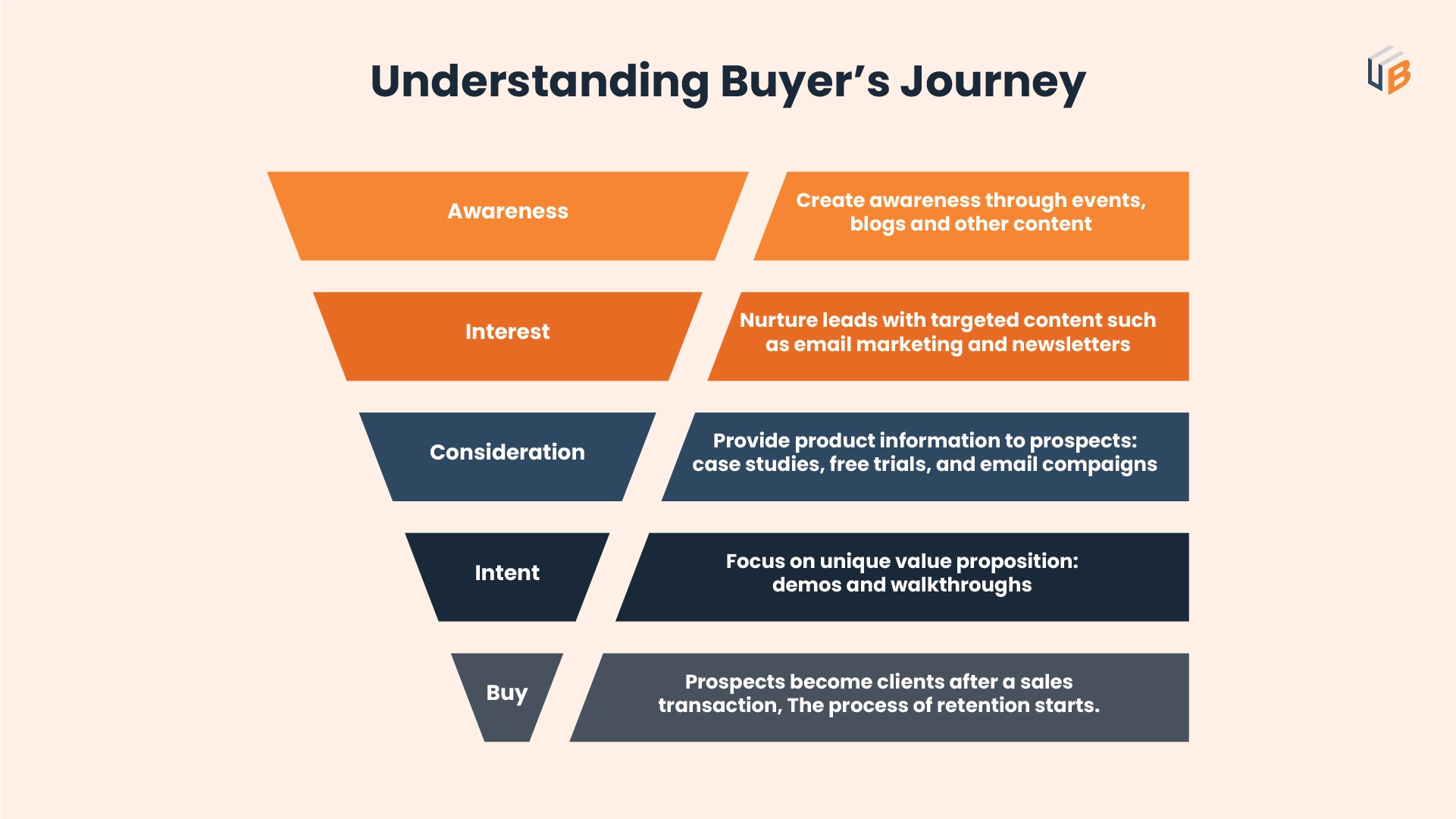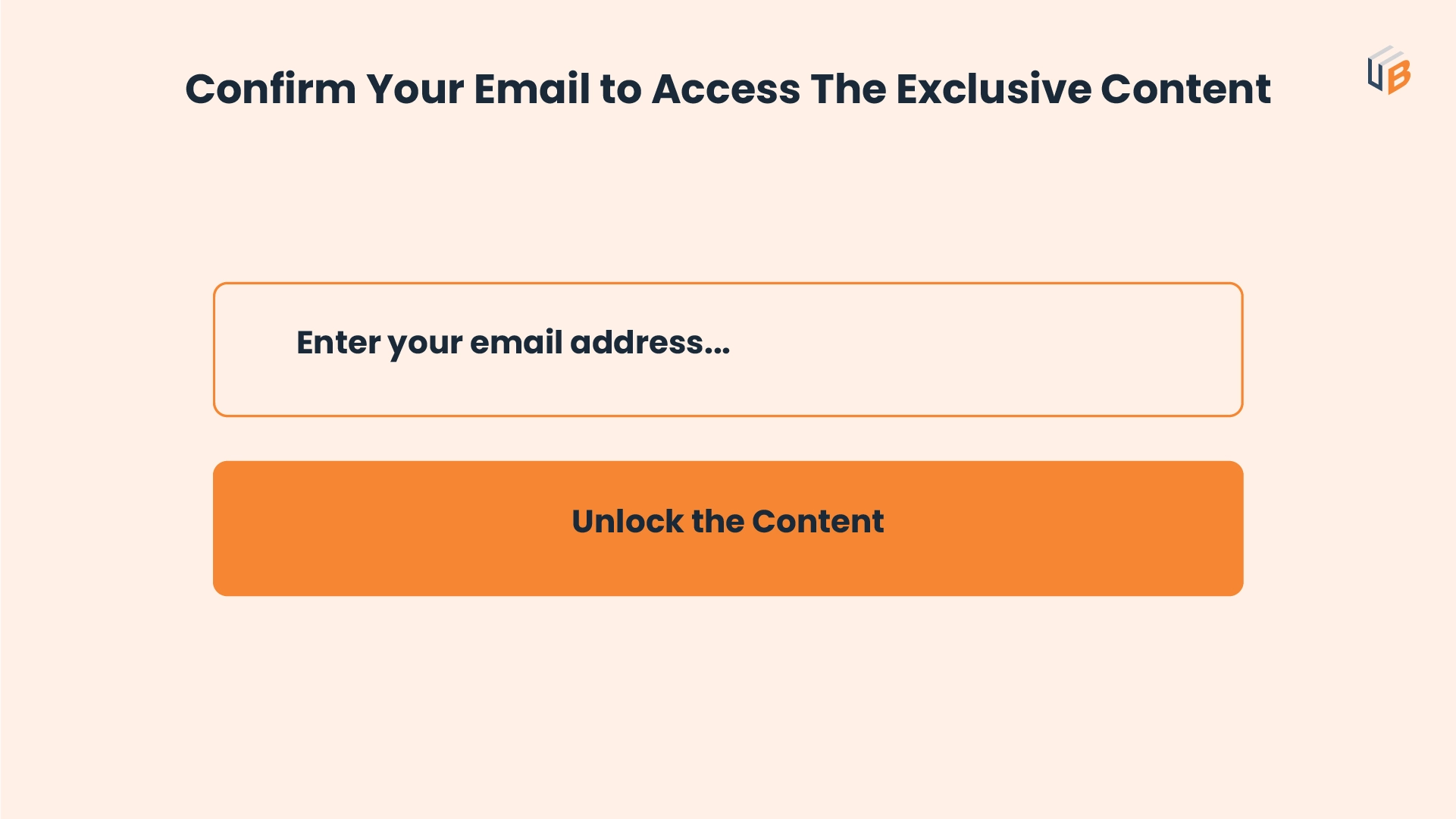
Introduction
Unlike other industries, the SaaS products buyers don’t make it to the impulsive buying category. Instead, shoppers invest a lot of time in research before they commit to a SaaS product purchase decision.
What’s surprising is that buyers are focused on finishing a bit over half of their buying process before they engage a vendor.
As a SaaS marketer, you need to keep buyer intent for SaaS product trends in mind.
During the buying phase, you’ll need to craft your marketing campaigns to ensure that they get all the necessary information about your SaaS products easily. That’s because, in the last few years, small companies spent huge amounts on SaaS products. That’s why intent is important to understand.
This post will help you understand how you can determine buyer intent for SaaS products and their sales journey based on their intent.
What is the Buyer’s Intent?
Buying intent or purchasing intent is a probability, the willingness of a consumer to purchase a product or service under a certain period. The data which shows the buyer’s intent pattern is called intent data.
In the digital landscape, intent data is scattered across multiple platforms such as websites, social media, and other marketing channels. Here it is a SaaS marketing team’s challenge to segregate intent data from different sources and use it accurately to detect buyer intent for SaaS products.
Broadly, intent data for SaaS products is divided into three parts—
- First-party data: It is data compiled based on the direct interaction of buyers with your website or social media channels.
- Second-party data: This data is retrieved from secondary sources linked to your brand like your partner’s website or traffic from guest blogging.
- Third-party data: This is the vast amount of data, which is captured across the entire internet. So, there is no limited type of method to collect and analyze this data.
Understanding Buyer Intent in SaaS Marketing: 6 Ways to Detect It Accurately
Honestly, it is common knowledge that time is a valuable commodity and marketers don’t have an abundance of this commodity.
You can’t keep giving demos to unqualified leads as this won’t fetch any meaningful results. Not only is it detrimental to your business but also can lead to quick burnout. Most industry leaders have admitted that they feel burnout at the end of the day. That’s where prospect qualification comes in.
Here are some ways in which you can qualify your prospect’s buyer intent for SaaS products holistically:
1. Engagement Across Different Channels
The first question that you should ask yourself while trying to understand buyer intent is which channels your prospects are coming from. Digitally, SaaS companies have various ways to engage their customers like websites, emails, social networking, and so on. Therefore, analyzing across different channels will help you determine how interested a buyer is and what their intent may be.
Let’s say, someone signs up for a free demo on your website. They may have simply landed on your website without having the clear intention to make a purchase.
They may be curious about your product but not necessarily ready to buy. Or, they might be your competitors who are just testing your products.
Typically, the buying journey for any SaaS user is a long one. They want to engage with you via different channels and find out as much background information as possible.
If you see a buyer who opened an email, then landed on your website, and ultimately checked your social media page, they are likely to be interested.
As a general rule of thumb, prospects who engage via multiple channels have a more vested interest in your SaaS products.
For better understanding, let’s dissect a buyer’s journey into smaller groups:

- Requirement: A buyer’s journey begins with a change in demand or the need to handle a new problem. For example, Zoom’s share hiked 100% during lockdown, but once COVID-19 vaccine was announced in November 2020, its share value dropped from $500.11 to $403.58 (Source: Statista). It shows how a change in need influences buyers’ intent.
- Comparison: need alone doesn’t mean that a consumer will show interest in your product. The buyer will first explore all the available options and then make a decision. Taking the same example of Zoom once again, during the pandemic, it wasn’t the only popular video calling software. Slack and Microsoft Teams also saw significant growth in their user base.
- Decision: After comparing the pros and cons of all the available options, finally the buyer comes to a decision. Depending upon the company’s size and urgency, buyers make a decision to buy a product or service.
This is just a basic overview of the customer journey. Rest based on your SaaS products or services, your buyer’s journey will vary.
2. Willingness to Provide Contact Information
Is your prospect willing to provide their email address and other personal contact information? If your answer is yes, you may have found yourself a serious buyer.
Wondering why?
According to a study in 2019, people are now less willing to share their information online. In fact, 54% of people are willing to share their email addresses online.
Prospects who are only looking to educate themselves want to learn more about a specific market. Buying is not on their mind. When such buyers are asked to provide their information in contact forms, they may not oblige.
This way, people who have willingly shared their email addresses or other personal information with you, are genuinely interested in buying your SaaS products or services.
Here you should make efforts to get the personal information of potential customers using different tactics, like companies spending substantially on SaaS products.
Offer exclusive studies or e-books on your site like B2B companies do. They offer special information on their portal for which users have to share their email addresses and names. With this, they know if a person is willing to share his or her personal information with them, they are actually interested in their services.
There’s also another example of how to check users’ intent. You can publish a few locked posts on your site. Users can read them by entering an email address. This way, only real readers and buyers stumble upon those posts, which provide you raw access to an interested user database.

3. Company Profile of the Buyer
Take a step back and carefully look at a prospect’s profile. Does their organization match the kind of clients you have? Do they seem like an ideal fit for your SaaS product?
If your answer is yes, there is a strong possibility that they actually want to make a purchase.
To analyze and evaluate the company profile, you can check out some of the following details:
- Number of employees
- Funding stage
- Operating vertical
- Revenue
Besides that, you have to create your ideal buyer’s persona and screen your potential buyers through it. To create your buyer’s persona, focus on the following things:
- Compose customer profile based on your present customer’s age, location, language, interest, challenges
- Understand your customers’ pain points.
- Know your buyers’ goals that they can achieve with your product or service.
- Importantly, understand how you can help your customers.
Age: 30 to 50 years
Location: Remote
Challenge: The company is losing customers due to a poor customer service system.
Pain point: Managers are struggling to monitor customer service team’s performance in the remote work environment.
Solution: You can pitch them how your cloud-based customer relationship software can help them to monitor their customer support team remotely while improving overall customer relationships.
Consider these factors while qualifying prospects. Doing so will also help you figure out if a particular prospect falls under your scope.
4. Engagement With Content
One of the best ways to differentiate between qualified prospective buyers and unqualified buyers is to check how they engage with your content.
Prospects who are interested in making a purchase are likely to engage with different kinds of content to learn more about the SaaS product.
Watch out for their engagement with demos, case studies, videos, whitepapers, and other types of content. If they are not engaging with your content, that means that there may be a lack of interest on their part.
Instead of detailed content, they may only be on the lookout for a free trial or a product overview. In a way, content marketing challenges for B2B SaaS businesses are different, such as:
- Standing out among the crowd is the biggest challenge for SaaS content generators as already so much SaaS content is available online.
- Highlighting customers’ problems in an easy way while promoting your services.
- Dealing with the constant demand for change and customers’ preferences, etc.
Now you know that engagement with content is an important metric. But how do you track it? For this, you can keep an eye on your page views, bounce rate, and even social shares. Looking at these metrics will give you a better understanding of every user’s engagement.
Before your sales representatives provide a demo to any prospect, they should have an idea about how prospects have engaged with your content.
5. Monitor Second-Party Data
All the pointers we have shared by far are focused on first-party buyer data. But second-party data is also very important to determine the buyer’s intent.
To monitor second-party buyer intent data, you have to bring following things into your consideration
- Competitor’s website data
- Online subscriptions
- Targeted keywords
- Product reviews
- Social media reach, etc.
In the initial stage, you don’t have to dig too deeply into your second-party data. Just focus on user engagement, search behavior, and social media patterns. Once you get your both first and second-party data, you can better visualize your buyer’s intent.
6. Interest in Follow-Ups
Another signal that can help you gauge buyer interest is how interested they are in following up with you. Keep a tab on how they respond to follow-up notifications. Do they ignore it or are they receptive to it?
Prospects who are there only to educate themselves are not likely to engage with any follow-up notifications. On the other hand, genuine buyers may still choose to get involved with any notifications that you send about callbacks or price quotes.
Following up on your buyer intent SaaS products across multiple channels, platforms, and verticals isn’t an easy task. Therefore, you need to get the right tools to monitor your buyer’s intent in real-time, such as—
- ZoomInfo will provide you with a 360-degree overview of customers’ prospects and opportunities.
- Leadfeeder is a B2B lead generation that identifies who visited your website and how they behaved.
- Bombora helps SaaS content creators find the most relevant and trendy topics.
- Lead Forensics is a good tool to monitor user engagement in real-time across different platforms.
- KickFire empowers sales and marketing teams with accurate and timely data.
There are so many buyer’s intent data monitoring tools available. You just need to pick the right tool based on your business requirements.
Ready to Determine Buyer Intent For SaaS Products?
When it comes to SaaS marketing, buyer intent isn’t always easy to track. It’s almost like picking wheat from the chaff. However, with the help of some quick tricks, it’s possible to ascertain buyer intent.
From omnichannel engagement to interest in follow-ups and willingness to provide contact information, there are some signs that you should watch out for.
Understanding buyer intent is important because it can help you check out who your qualified prospects are. As a result, you can channelize your efforts and time for better results.
Do you have any questions about understanding buyer intent? Please feel free to mention it in the comments section below.
Our blog
Latest blog posts
Tool and strategies modern teams need to help their companies grow.

B2B companies must generate leads that are ready to buy their products in order to me...

In the absence of a constant flow of leads, sales teams can't meet their targets and ...

Podcasts and webinars are powerful tools that marketers can use to reach new audience...



